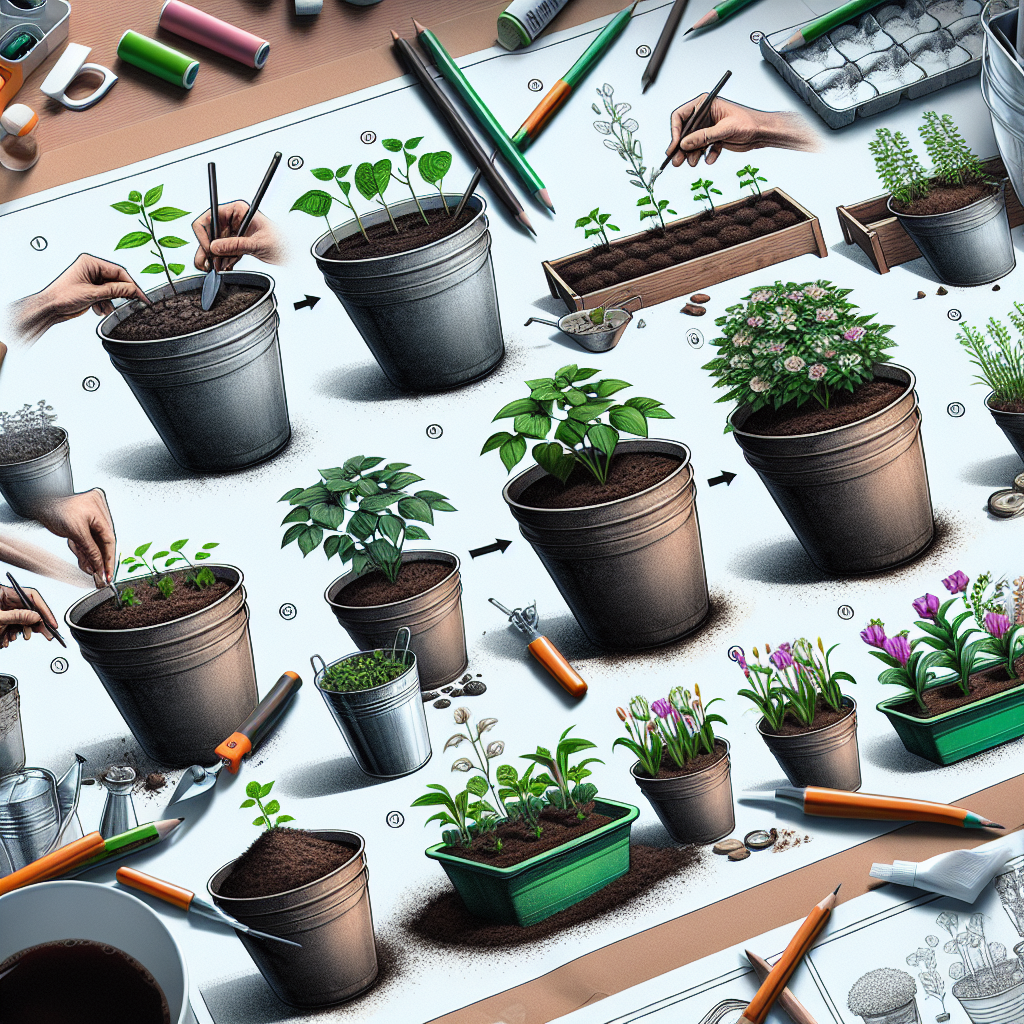Container gardening is a great way to bring nature into your home, no matter how limited your outdoor space may be. Whether you live in a bustling city apartment or a suburban house with a small backyard, container gardening allows you to cultivate flowers, herbs, vegetables, and even small trees in pots and planters. In this article, we will discuss the steps you need to take to start your own container garden.
1. Choose the Right Containers
The first step in starting a container garden is choosing the right containers for your plants. You can use almost anything as a container – from traditional terracotta pots to recycled yogurt containers or even old tires. However, it’s important to make sure that whatever container you choose has drainage holes at the bottom to prevent water from pooling and drowning your plants’ roots.
Additionally, make sure that the container is large enough for your plant to grow comfortably. A good rule of thumb is to choose a pot that is at least 12 inches deep and wide for most plants. Keep in mind that larger pots will hold more soil, which means they will dry out more slowly than smaller pots.
2. Select the Right Soil
Choosing the right soil for your container garden is crucial to the success of your plants. Most potting mixes are lightweight and well-draining, making them ideal for container gardening. Avoid using garden soil in containers, as it can become compacted and drain poorly in pots.
If you’re growing vegetables or herbs, you may want to consider using a soilless mix that is specially formulated for edibles. These mixes often contain ingredients like coconut coir or composted bark that help retain moisture and nutrients.
3. Pick Your Plants
Once you have chosen your containers and soil, it’s time to pick out the plants you want to grow in your container garden. When selecting plants, consider factors like sunlight requirements, water needs, and how much space they will need to grow.
For beginners, it’s best to start with easy-to-grow plants like herbs (such as basil, mint, or parsley), leafy greens (like lettuce or spinach), or annual flowers (such as marigolds or petunias). These plants are generally low-maintenance and forgiving of beginner mistakes.
4. Plant Your Garden
Now that you have all of your supplies ready, it’s time to plant your container garden! Fill each pot with soil up to about an inch below the rim of the pot. Gently loosen any roots bound in their nursery pots before planting them in their new homes.
Make sure not to overcrowd plants in their containers – give them enough space so they have room to grow without competing for resources like water and sunlight. After planting each pot, water thoroughly until excess water drains out of the bottom drainage holes.
5. Provide Proper Care
Like any garden, container gardens require regular care and maintenance to thrive. Make sure to check on your plants regularly and water them when the top inch of soil feels dry to the touch (this may vary depending on factors like temperature or humidity).
Fertilize your plants periodically with a balanced fertilizer according to package instructions – this will help ensure that they continue growing strong throughout their growing season. Additionally,
6. Consider Companion Planting
Companion planting involves planting different species together that benefit each other by attracting beneficial insects or repelling pests naturally.
7 Make Sure Your Garden Is Accessible
Make sure your garden is accessible so you can easily reach all parts of it for planting watering caring harvesting.
In conclusion starting a container garden can be fun rewarding way bring nature into spaces large small anyone can do regardless skill level experience join community budding urban growers today!














